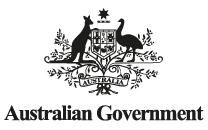Inspector-General of Biosecurity environmental biosecurity review report
A report on a review of Environmental biosecurity risk management in Australia was issued today by Australia’s Inspector-General of Biosecurity, Dr Helen Scott-Orr.
The review examined how effectively environmental biosecurity risks are being addressed within the broader biosecurity system. It focussed on the role of the Australian Government in keeping out as many serious exotic environmental pests and diseases as possible, and in engaging with other governments and stakeholders to manage the risks of those which enter.
Australia has one of the world’s worst records of native species extinction, with a further 1,500 unique species on a ‘threatened’ list, and whole ecosystems at risks of collapse in some cases. Most of this damage has been caused by introduced invasive species and pathogens—such as feral cats, cane toads, countless weeds, chytrid fungus of frogs, and myrtle rust of many native plants—which are already widespread throughout the country. The challenges of preventing further pests entering and establishing will only increase with greater trade and travel.
It is imperative to keep other potential environmental pests and diseases at bay where possible, to preserve remaining native species and ecosystems. Deliberate or illegal import of animals (such as cat hybrids which could become ‘super–feral’ cats) and unwitting import of pathogens such as white nose syndrome of bats, which could enter on clothes or equipment of cavers and bushwalkers, are just two high-risk pathways of many that must be managed.
A 2015 Senate inquiry into environmental biosecurity proposed that the Australian Government Department of the Environment and Energy become the lead federal agency for environmental biosecurity. However, in her report, Dr Scott-Orr recognised and strongly endorsed the primary role of the Department of Agriculture and Water Resources (Agriculture) in managing most aspects of pre-border and border biosecurity—their activities are already keeping out a great many unwanted pests and diseases. She has made seven recommendations to improve environmental biosecurity coordination and delivery between governments and other stakeholders.
Agriculture has agreed with all of these recommendations. Long-term commitment to their full implementation, with adequate resourcing, will be needed to safeguard our unique environment as biosecurity threats increase.
Stakeholder communication and engagement on environmental biosecurity is challenging. Australia has a huge variety of native animals, plants and ecosystems, all of which have different organisations and communities involved with them, and an even greater complexity of environmental biosecurity threats which beset them. Environmental biosecurity roundtables and inclusive threat prioritisation processes can contribute enormously to a shared community understanding of priority targets and ways to combat them.
At a broader level, ongoing engagement with the wider national and international scientific research community is needed, to find more innovative ways to identify and deal with environmental biosecurity threats.





